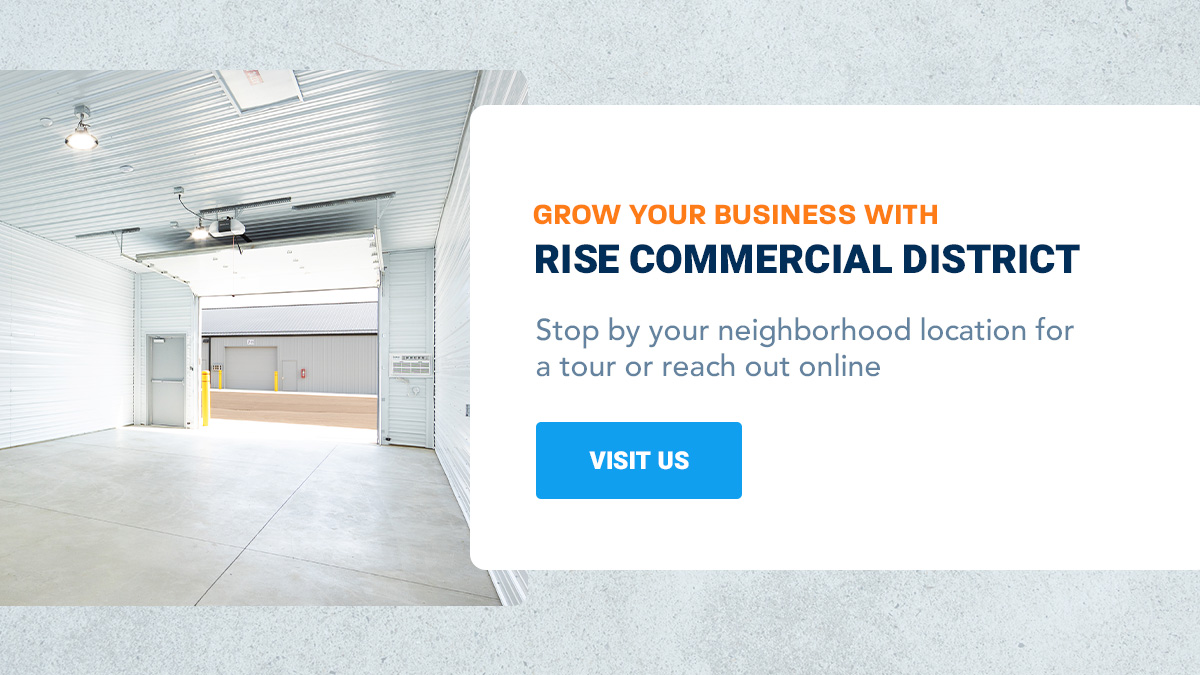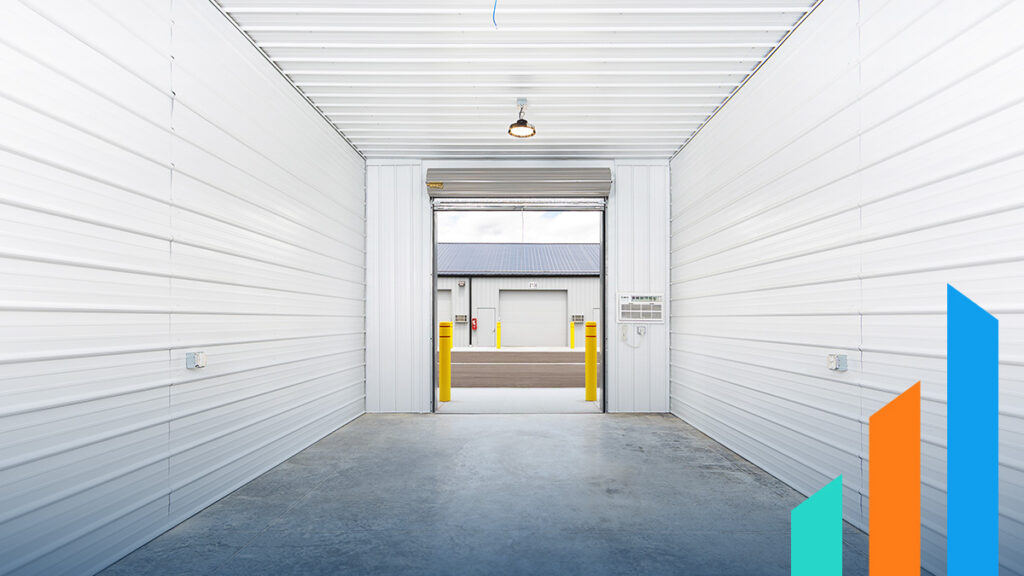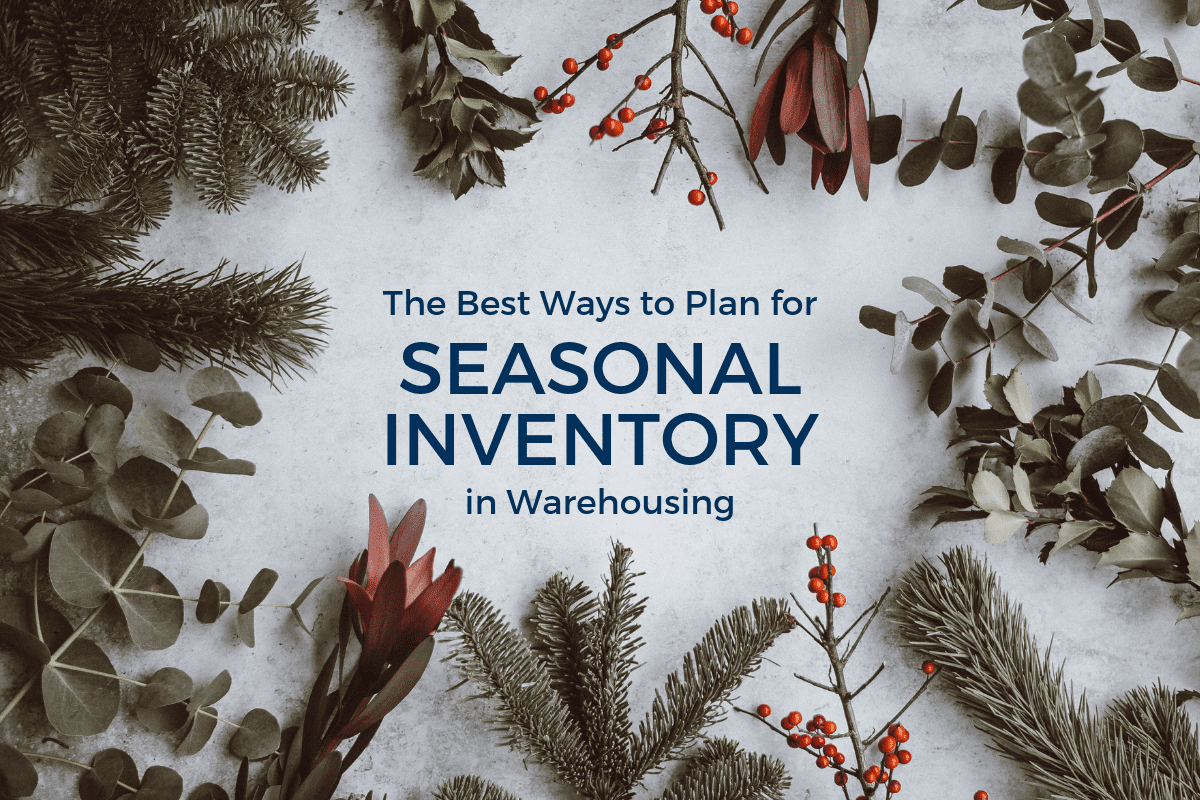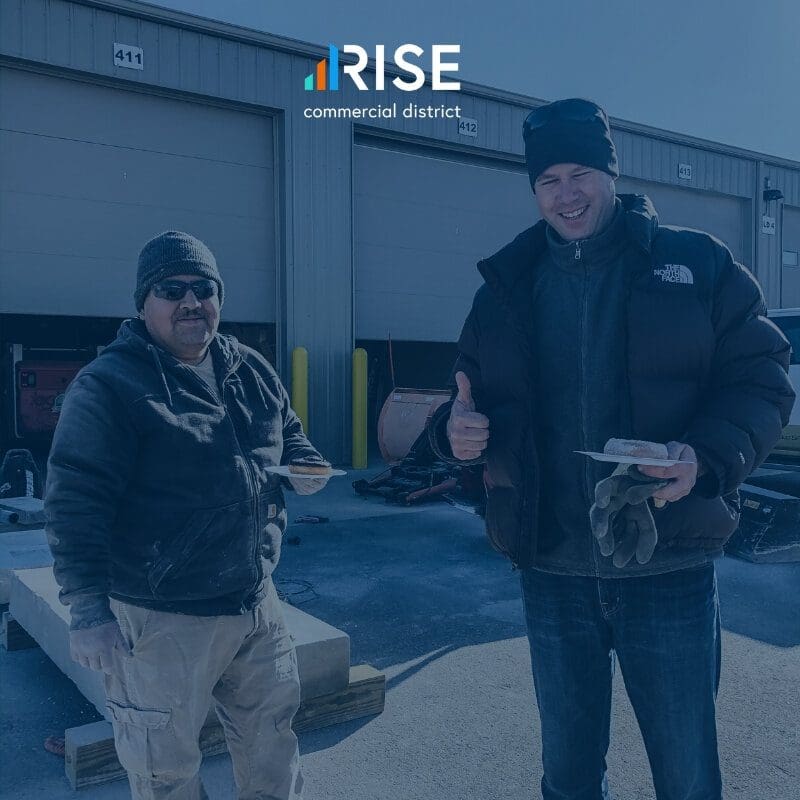- Small Warehouse Misconceptions
- Right Amount of Space
- What Should Small Businesses Prioritize?
- Why Flexibility is Important
- Frequently Asked Questions
Key Points
Feeling a bit overwhelmed about warehouse leasing? We’ve helped hundreds of business owners just like you figure this out, and we’re here to share the knowledge:
- First, let’s clear up a few myths so you can make a confident small-warehouse-leasing call. Understanding what’s fact or fiction is the best foundation for success.
- Aligning warehouse size and business needs is pivotal. Too large a space translates to excess costs, while a too-small one can dampen growth.
- Cost, location, accessibility and safety are the big four — skip one and headaches pop up fast. Features, amenities and lease flexibility are also crucial to smooth, agile operations and scalability.
When your business starts bursting at the seams, let’s cut through the noise together. We’ll walk you through what really matters, help you spot those hidden costs, and share what we’ve learned about staying flexible along the way.
What Are the Most Common Small Warehouse Leasing Misconceptions?
Small business owners like you know all too well that it’s easy to get caught up in myths and misinformation around leasing warehouse space. Let’s debunk some common misconceptions and set the record straight together.
1. All Warehouse Spaces Are the Same
We get it — from the outside, warehouses might look similar, but finding a space that works as hard as you do is what really matters.
Today’s options offer all shapes and sizes, with various amenities and features to meet your unique needs. For example, a small office space offers you an upgrade over meeting clients in noisy coffee shops, while flex spaces consolidate warehouses with professional office or showroom areas under a single roof — no more having to relocate the car or rearrange the space every time a shipment arrives.
Your business has specific needs, so take the time to research how you can make the space fit the way you work. For instance, e-commerce businesses can maximize vertical storage for better inventory management and simpler fulfillment.
2. Leasing Is a Long-Term Commitment With a Hefty Deposit
That’s another myth we love to bust — the truth is that you don’t need to lock yourself into a years-long lease and make a hefty deposit to get warehouse space.
We’ve worked with enough growing businesses to know that flexibility is more than a luxury. Your customer demands change, market trends and trade policies shift, and sometimes you need to pivot fast. That’s why we believe your lease should work with your business plans, not against them.
Look for a partner who lets you adapt when changes occur and supports your success with maximum flexibility. The right one will offer affordable (or no) deposits and lease lengths that match your needs, whether for three months or three years.
3. You Need a Lot of Space
We’ve seen lots of businesses like yours playing Tetris with their inventory, but here’s the truth — when it comes to calculating warehouse space requirements, you may not need a bigger space, just a smarter one.
If the family bikes and holiday decorations battle you for space, small industrial bays can feel like a luxury upgrade! Plus, you get a blank slate. Lay out the bay to suit your workflows and stop zigzagging through random storage or moving boxes to reach what you need. You may be surprised how much you can do with less space when it’s well-configured for your needs.
How Do You Know if You’re Leasing the Right Amount of Space for Your Business?
There’s a Goldilocks approach to sizing warehouse space — too much and you’re throwing money away, while too little and you’re back to inventory Tetris again. We’ve learned that with a little planning, you can get the one that’s just right:
- Start with basic square footage: Think about how you use your space and the average needed for certain tasks and settings. For example, high-density office seating means you’ll need about 100 square feet per employee. Numbers will differ depending on your specific operations, so accurate measurements are crucial.
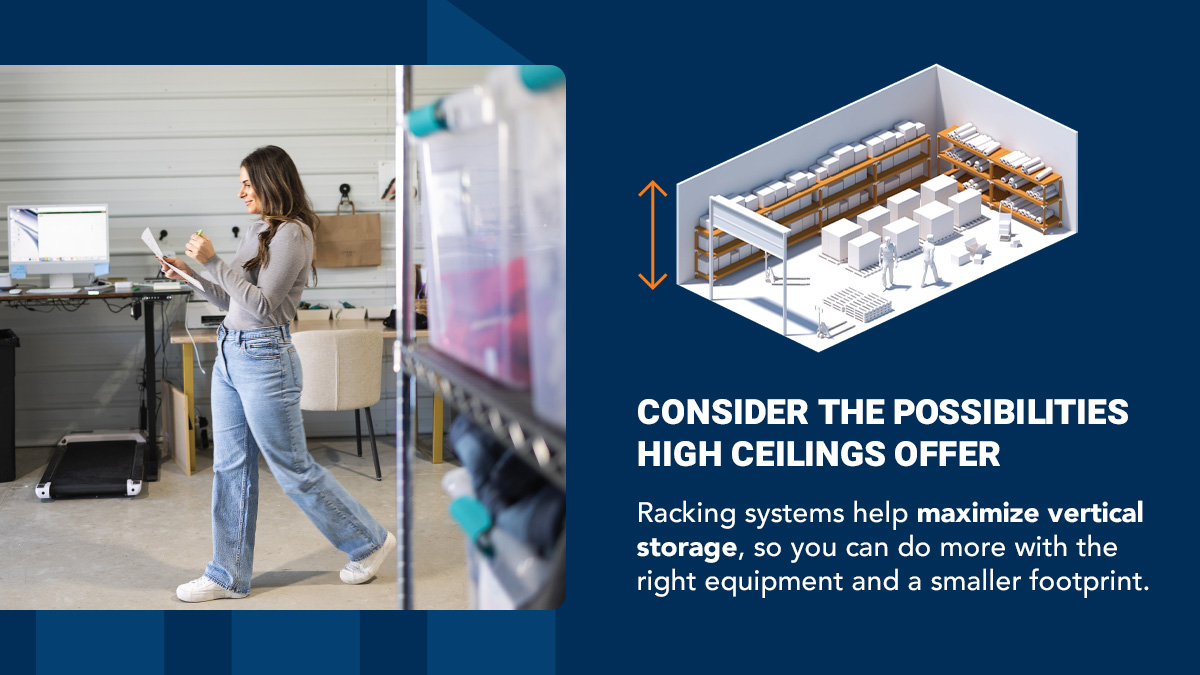
- Look up, not just down: Don’t just focus on the floor — consider the possibilities high ceilings offer. Racking systems help maximize vertical storage, so you can do more with the right equipment and a smaller footprint.
- Think ahead: What happens when your business needs change? Look for properties that give you room to adapt. We’ve found that this kind of flexibility saves the day when peak season hits or plans suddenly pivot.
What Should Small Business Owners Prioritize When Looking at Warehouse Properties or Units?
Hunting for warehouse space shouldn’t feel like a maze — running a business is tough enough. Focusing on these priorities can take the guesswork out and create a roadmap to finding the best space for you.
Lease Inclusions and Terms
Don’t just concentrate on the square-foot price tag. Know exactly what you’re paying for so every dollar pulls its weight. That means looking closely at:
- Must-have features and amenities: Need climate control to protect your inventory? A shared conference space for client meetings? Or maybe loading docks and equipment for large shipments? Consider your day-to-day operations and make a list of must-haves to guide your choices.
- Shared costs: Make sure you understand what costs the warehouse owner passes on to you, like property taxes, insurance or maintenance fees. Get clear on the calculations to avoid surprises.
- Time frame, termination and renewal terms: How long is the lease, and what happens if your needs change? Pay attention to the fine print about termination and renewal. You want one that lets you adapt, not that locks you in.
Location
Your location affects everything from your daily commute to your bottom line. Here’s what to consider when scouting potential small warehouses:
- Can everyone get there easily? Make sure there’s plenty of parking for you, your team and any guests. You’ll also want easy access for showroom visits or pickup orders.
- What’s nearby? Being near major routes and transportation hubs saves time and money on logistics. Check the neighborhood for public transportation availability and nearby places to grab food. Your employees will appreciate it!
- Will you fit in? Research those zoning laws and make sure your business type is both welcome in the area and close to your target market.
Safety and Security
Safety and security might be overlooked if you focus solely on price. When people feel safe on-site, they stick around — and you avoid surprise costs. Look for a warehouse that offers:
- Good fencing and access control to keep track of who’s coming and going.
- Bright lighting and well-maintained properties with few places to hide.
- On-site cameras and 24/7 video monitoring to watch over people and assets.
- Fire safety measures like fire suppression systems and clearly marked exits.
Why Is Flexibility Important in Today’s Leasing Environment?
What’s the secret to successful growth in today’s ever-changing market? Flexibility. And that starts with your warehouse lease. When shipping rules change or customers suddenly want same-day delivery, flexibility keeps you agile, resilient and ready to respond.
Your business looks a lot different today than it did a year ago, right? That’s why you should look — or negotiate — for lease terms that work with you. Consider options like the scalability to move between units as your demands change and rent adjustments linked to real-world market conditions.
Grow Your Business With RISE Commercial District
We’re here in Ohio, Indiana, Minnesota and Wisconsin, helping businesses like yours find their just-right warehouse space. What makes us different? Transparent pricing, variety in space styles, and all the features and amenities you need to keep operations running smoothly. Plus, you’re joining a community of fellow business owners who, like our team, want to see you succeed.
Want to learn more about RISE Commercial District and how we can help? Explore our blog for informative tips and insights, or listen to the Build Boldly podcast on Spotify or Apple Podcasts. You can also stop by your neighborhood location for a tour or reach out online to experience our difference firsthand!
Frequently Asked Questions
What Are Small Bay Industrial Units?
Small bay warehouses are your slice of a larger industrial building, and they’re a smart choice when you’re ready to grow without the large overhead of a massive space. They offer up to about 5,000 square feet within bigger buildings that typically range between 50,000 and 100,000 square feet. Small industrial bays are perfect for growing businesses, whether you’re running an e-commerce operation or doing light manufacturing.
What Benefits Do Small Warehouses Offer?
Small warehouses pack a lot of value into their space. You get the cost-effectiveness of a right-sized facility plus the flexibility of making it work for various business purposes.
Take Floor Coverings International, for example. They transformed their space into a professional office and warehouse, using our loading docks to keep their logistics running smoothly. It’s just one example of how the right space with the right amenities helps your business thrive.
What Are the Common Mistakes to Avoid When Leasing Small Warehouses?
We’ve seen businesses like yours face the same challenges with warehouse leasing — size mismatches, accessibility headaches and surprise costs are common. Let us help you avoid the pitfalls and find a space that actually works for you.
How Can I Find the Best Small Bay Industrial Space for Lease?
Finding the perfect small warehouse for you starts with knowing what you truly need versus what’s just nice to have. Detail your size requirements, must-have features and amenities, and budget limits. Then, use your small warehouse leasing checklist to compare the options and make sure you didn’t miss anything.
What Should I Know About Short-Term Versus Long-Term Leases?
Don’t just sign the first lease that comes your way — both short- and long-term leases come with benefits and drawbacks. Explore your options so you can find the sweet spot between flexibility and stability that works for your goals and budget.
